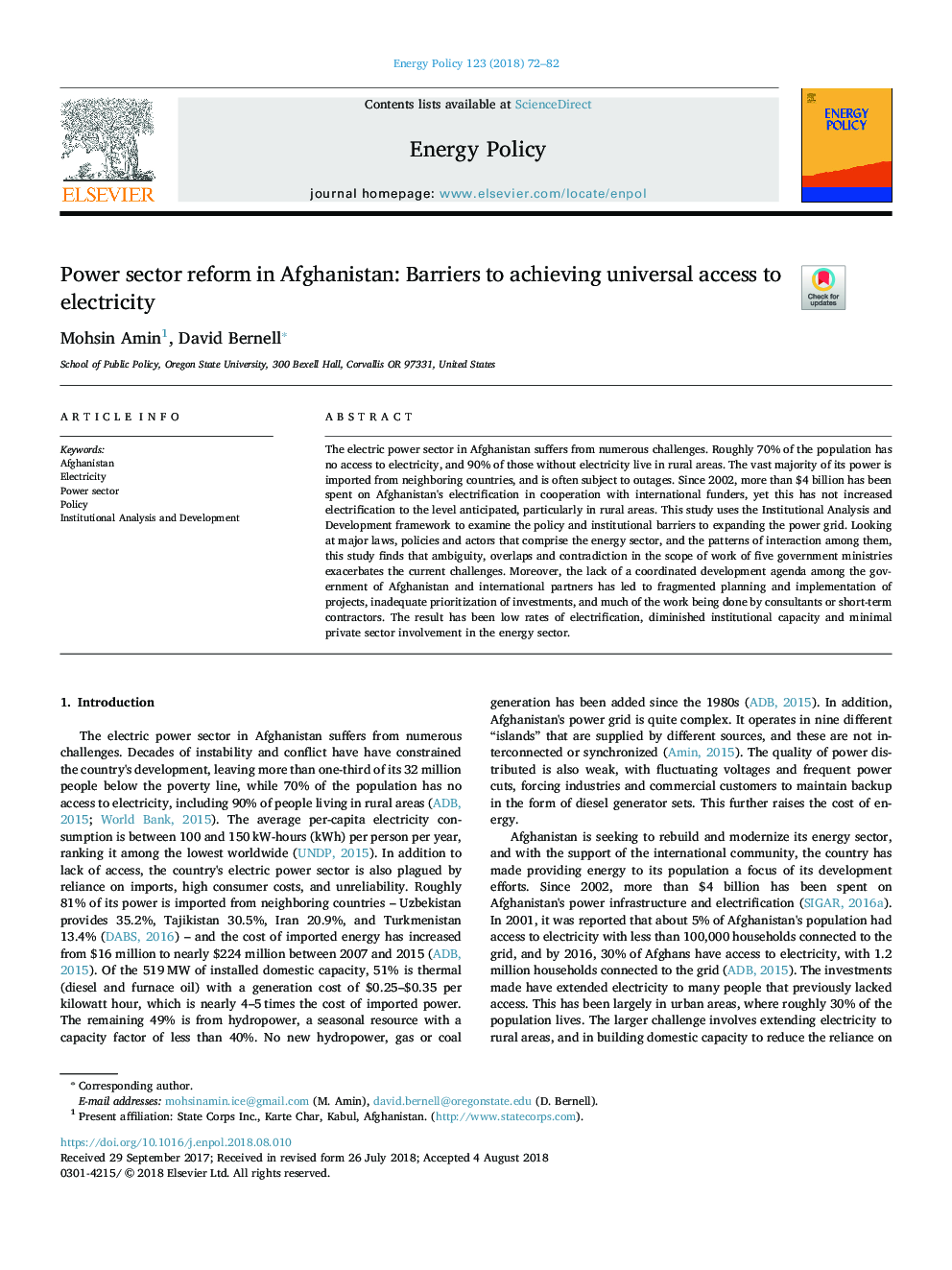| Article ID | Journal | Published Year | Pages | File Type |
|---|---|---|---|---|
| 8948042 | Energy Policy | 2018 | 11 Pages |
Abstract
The electric power sector in Afghanistan suffers from numerous challenges. Roughly 70% of the population has no access to electricity, and 90% of those without electricity live in rural areas. The vast majority of its power is imported from neighboring countries, and is often subject to outages. Since 2002, more than $4 billion has been spent on Afghanistan's electrification in cooperation with international funders, yet this has not increased electrification to the level anticipated, particularly in rural areas. This study uses the Institutional Analysis and Development framework to examine the policy and institutional barriers to expanding the power grid. Looking at major laws, policies and actors that comprise the energy sector, and the patterns of interaction among them, this study finds that ambiguity, overlaps and contradiction in the scope of work of five government ministries exacerbates the current challenges. Moreover, the lack of a coordinated development agenda among the government of Afghanistan and international partners has led to fragmented planning and implementation of projects, inadequate prioritization of investments, and much of the work being done by consultants or short-term contractors. The result has been low rates of electrification, diminished institutional capacity and minimal private sector involvement in the energy sector.
Related Topics
Physical Sciences and Engineering
Energy
Energy Engineering and Power Technology
Authors
Mohsin Amin, David Bernell,
